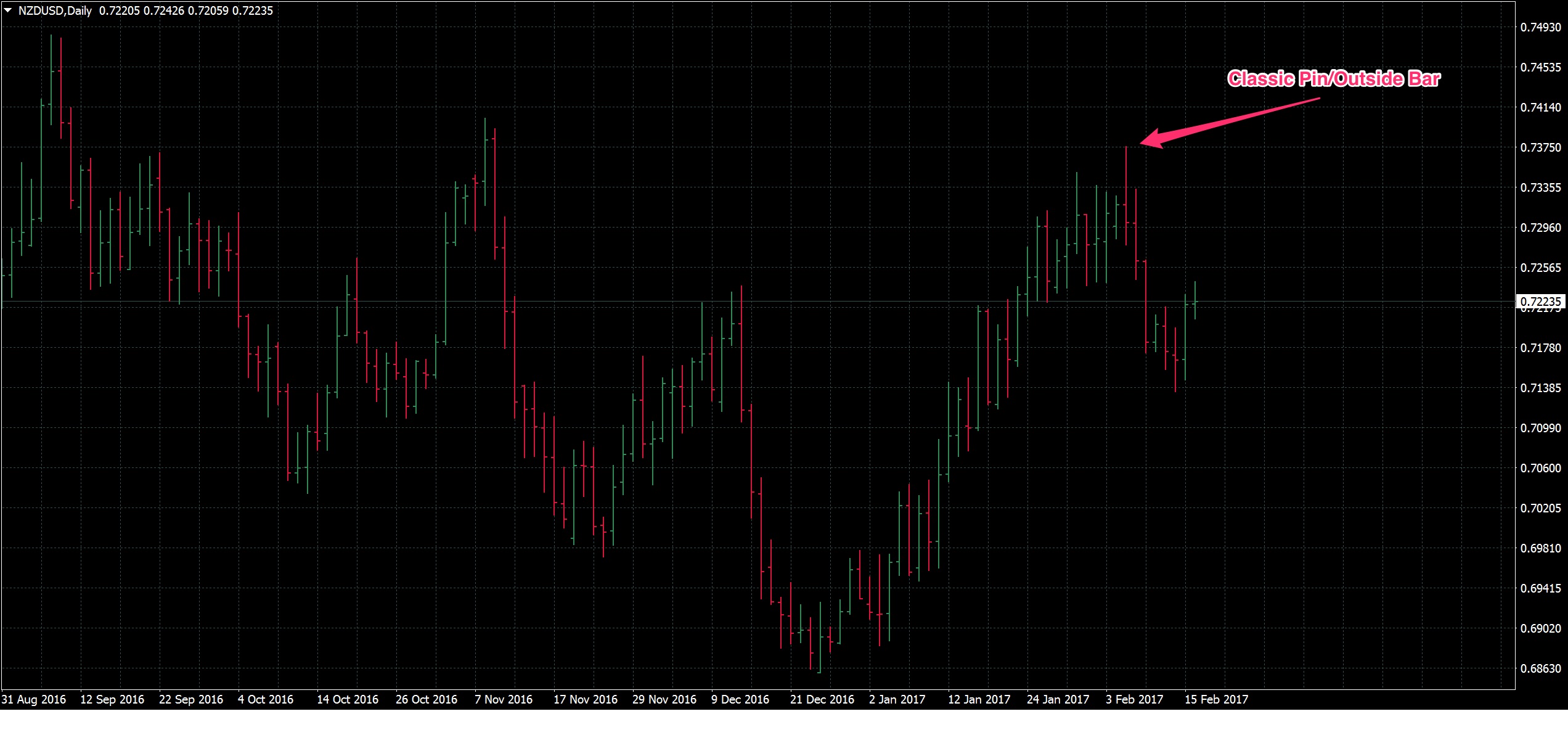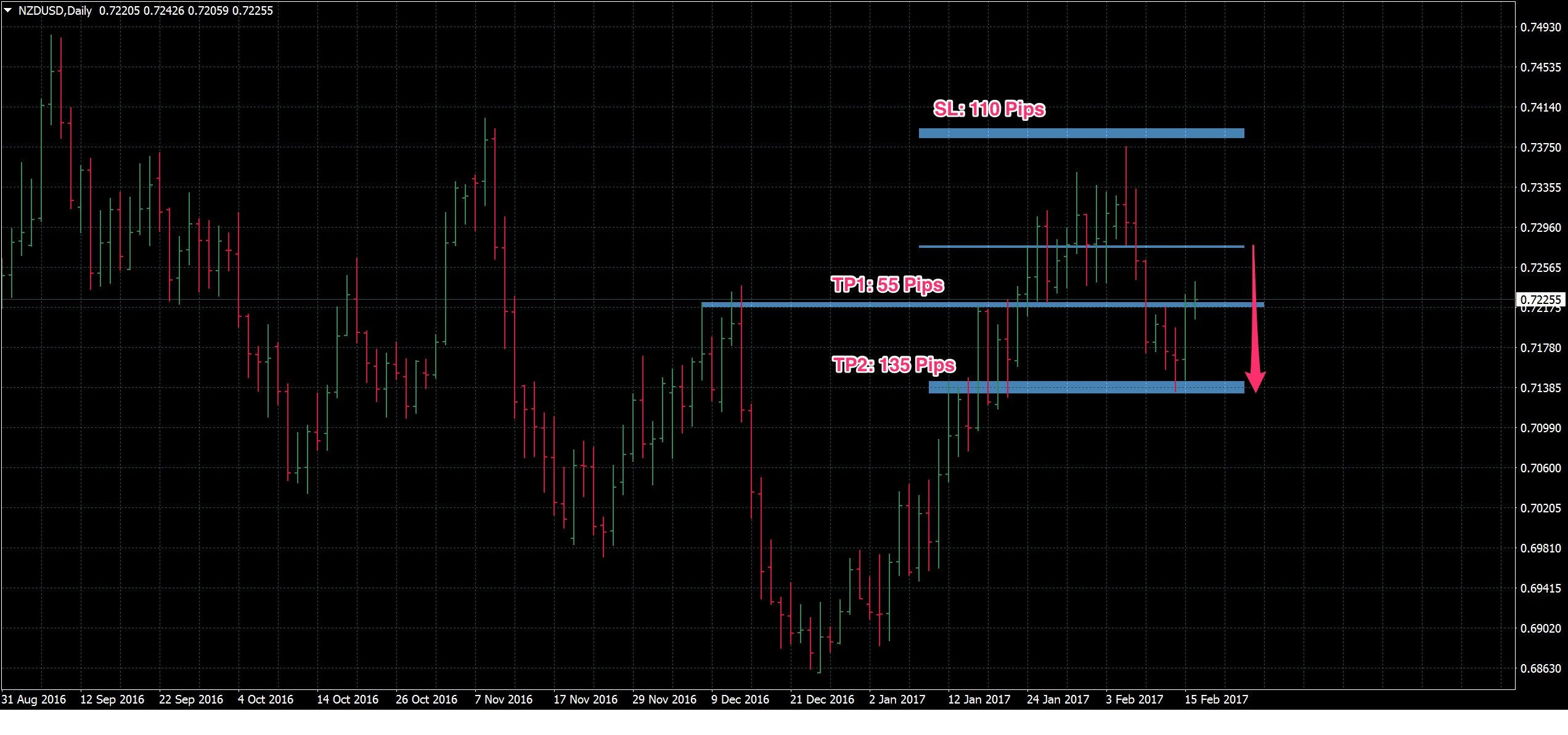3 min read
Scientist Discovered Why Most Traders Lose Money – 24 Surprising Statistics
“95% of all traders fail” is the most commonly used trading related statistic around the internet. But no research paper exists that proves this...
3 min read
Moritz
Feb 15, 2017 7:00:00 PM

This article was inspired by a discussion with a friend of mine who just recently started out in trading and, as so many, the first thing he traded were price action bars, namely Outside Bars, Pin Bars, Inside Bars.
I was talking to him that having a low winrate and a bigger RRR simply makes more sense in trading because a system with a high winrate and a low RRR has a very small margin for error, but we are all human and make errors all the time. So as the discussion progressed, he complained that 90% of the PA setups he found tradable did not even have an RRR of bigger than 1:1. Trading Pin Bars, for example, the traditional way (at the break) with the stop behind the high/low of that bar will seldom give you a RRR bigger than 1:1. How do we fix this?
Well, either we go down to the H4 and find smaller stops there, or we use a simple trick many traders employ to get better prices. We wait for retracements. Why does that make so much sense? Well, a price action bar like a Pin Bar or an Outside Bar on the Daily Chart – they are trends for day traders! Take a look.
Now if we take a look at this whole bar on an M5 chart, it looks like this.
A spike up, followed by a drive down, followed by a retracement, and then drifting lower until the close of the day. Now, where in that whole fuss is price likely to get rejected to the downside again, once (if) it comes back up?
Yes, at the 50% Fibonacci retracement of the previous day (the Pin Bar), where price actually went before – so there will even be a double top in place, genius. This is how it looks on the daily chart with traditional SL and TP, and the improved SL and TP.
 With the traditional entry, you had a profit potential of 0.5R with the conservative TP (1) or a profit potential of 1.2R with the extended TP (2).
With the traditional entry, you had a profit potential of 0.5R with the conservative TP (1) or a profit potential of 1.2R with the extended TP (2).
With the retracement entry, you would have a profit potential of 2.2R (TP1) or 3.8R (TP2).
Now I am no math wizard, but utilizing a tweak as simple as this boosted our potential profit by so much that I really want to call this magic.
Will our winrate drop with this approach rather than waiting for a break of last day’s low? I think so, BUT…let’s do the calculations with TP1 and the assumption that we are trading a Set&Forget approach here.
And for TP2…
So, in case of utilizing TP1, we would need to have a 35% higher winrate with the traditional method in order to break even, or in other words, 35% more of our trades would have to result in a loss in order to perform “as bad” with the retracement method as with the traditional method.
And in the case of TP2, the discrepancy would be around 25%. Now, do you really think that utilizing the retracement entry approach will decrease our winrate by that much? I seriously doubt it. Alas, to be even more confident in our entries, we can look for S/R and swingpoints the bar cut through and put our entry orders there, like looking for the left eye of the Pin Bar, or we just always enter at the 50% Fibonacci retracement. If we get confluence, even better, of course.
You could even go down to the M15 or M5 as a daytrader and wait for price to retrace to that predefined zone and then try to get in with small stops, seriously boosting your RRR. There are tons of options we have.
Are we going to miss trades because price won’t retrace to our entry order? Surely. Are we going to decrease our winrate by a bit because we don’t wait for the break of the high/low of the signal bar? Yes, indeed. But, are we boosting our RRR a lot with this approach without sacrificing a huge junk of our winrate? Definitely. Are we going to have more space to manage our trades and go to break even before we run into any trouble zones? YES! And, last but not least, are we going to take pressure off our entries because a much smaller winrate is required? Hell yes.
An added bonus for me, for example, would be that living in HK, the daily bars close at 5 am in the morning when I am sleeping and I often miss the breakouts. But waiting for retracements often gives me enough time to set my orders after I woke up and then all I have to do is to let price come to me.
You can follow the same procedure with Outside bars, of course. What I mainly wanted to show you with this article is that complaining about a strategy doesn’t cut it, you have to attack it with creativity from different angles and when doing so, never forget that the markets are fractal. Almost always is there a possibility to increase our RRR dramatically without giving up too much of our winrate (or even increasing it..) by looking at different timeframes and especially drilling down to lower timeframes for timing our trades, thus taking pressure off our entries, and increasing our happiness level. You see, I really do love my retracements ;).

3 min read
“95% of all traders fail” is the most commonly used trading related statistic around the internet. But no research paper exists that proves this...

3 min read
Trendlines can be great trading tools if used correctly and in this post, I am going to share three powerful trendline strategies with you.

3 min read
Choosing the right trading journal is essential for traders wanting to analyze performance, refine strategies, and improve consistency. In this...